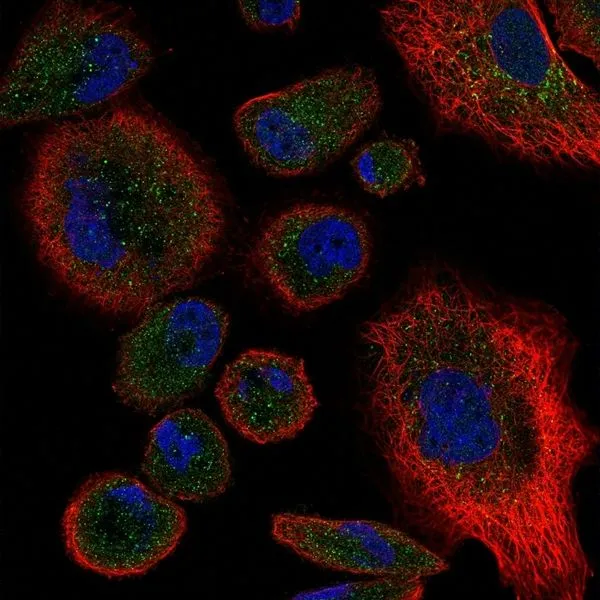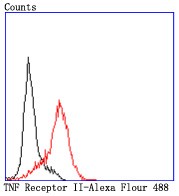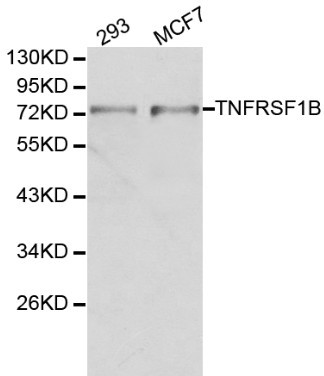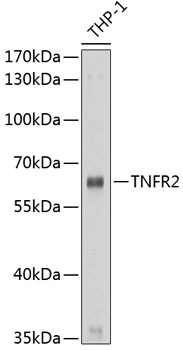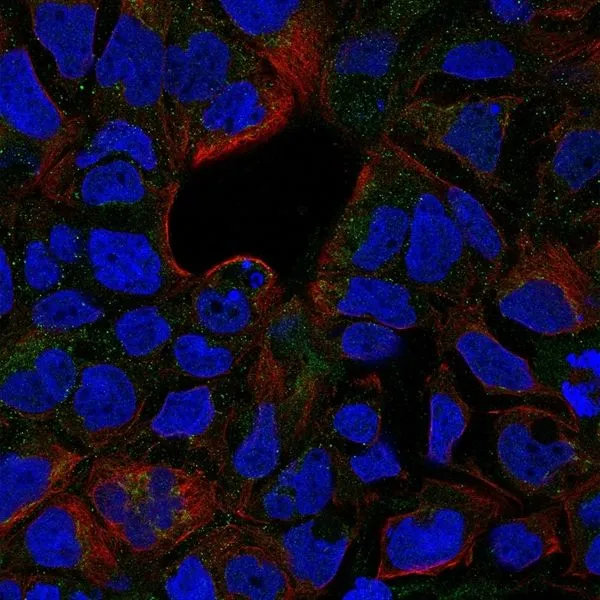
ICC/IF analysis of Caco-2 cells using GTX31250 TNF receptor II antibody(green). Counterstained with actin, red and nuclei, blue
TNF Receptor II antibody
GTX31250
ApplicationsFunctional Assay, ImmunoFluorescence, Western Blot, ELISA, ImmunoCytoChemistry
Product group Antibodies
TargetTNFRSF1B
Overview
- SupplierGeneTex
- Product NameTNF Receptor II antibody
- Delivery Days Customer9
- Application Supplier NoteWB: 0.1-0.2microg/ml. ICC/IF: 3microg/ml. ELISA: 0.5-2microg/ml. *Optimal dilutions/concentrations should be determined by the researcher.Not tested in other applications.
- ApplicationsFunctional Assay, ImmunoFluorescence, Western Blot, ELISA, ImmunoCytoChemistry
- CertificationResearch Use Only
- ClonalityPolyclonal
- Concentration1 mg/ml
- ConjugateUnconjugated
- Gene ID7133
- Target nameTNFRSF1B
- Target descriptionTNF receptor superfamily member 1B
- Target synonymsCD120b, TBPII, TNF-R-II, TNF-R75, TNFBR, TNFR1B, TNFR2, TNFR80, p75, p75TNFR, tumor necrosis factor receptor superfamily member 1B, TNF-R2, TNF-RII, p75 TNF receptor, p80 TNF-alpha receptor, tumor necrosis factor beta receptor, tumor necrosis factor binding protein 2, tumor necrosis factor receptor 2, tumor necrosis factor receptor type II
- HostRabbit
- IsotypeIgG
- Protein IDP20333
- Protein NameTumor necrosis factor receptor superfamily member 1B
- Scientific DescriptionThe protein encoded by this gene is a member of the TNF-receptor superfamily. This protein and TNF-receptor 1 form a heterocomplex that mediates the recruitment of two anti-apoptotic proteins, c-IAP1 and c-IAP2, which possess E3 ubiquitin ligase activity. The function of IAPs in TNF-receptor signalling is unknown, however, c-IAP1 is thought to potentiate TNF-induced apoptosis by the ubiquitination and degradation of TNF-receptor-associated factor 2, which mediates anti-apoptotic signals. Knockout studies in mice also suggest a role of this protein in protecting neurons from apoptosis by stimulating antioxidative pathways. [provided by RefSeq, Jul 2008]
- Storage Instruction-20°C or -80°C,2°C to 8°C
- UNSPSC12352203

